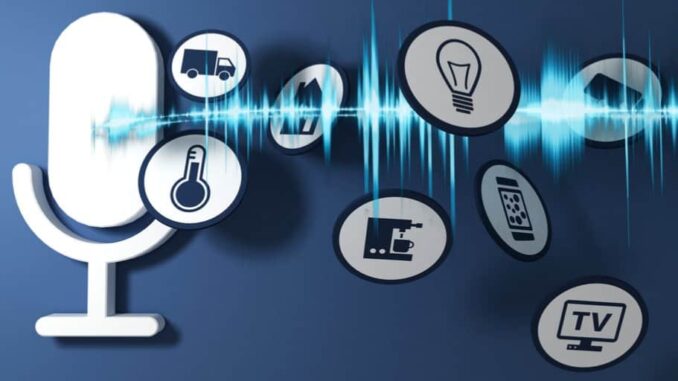
Voice technology has emerged as a game-changer in the world of digital innovation, revolutionizing how we interact with devices and access information. Voice assistants and voice-activated devices have become increasingly popular due to their convenience, accessibility, and potential to streamline various aspects of our lives. By unlocking the power of voice technology, we are witnessing a transformative shift in how we interact with technology and the world around us.
Voice assistants, such as Amazon’s Alexa, Apple’s Siri, Google Assistant, and Microsoft’s Cortana, are virtual companions that respond to voice commands and perform tasks or provide information. These AI-powered assistants can set reminders, answer questions, control smart home devices, play music, and much more. The natural language processing capabilities of these voice assistants have improved significantly, making interactions feel more intuitive and human-like.
The rise of voice-activated devices has been a driving force behind the widespread adoption of voice technology. Smart speakers, like the Amazon Echo and Google Home, have become common fixtures in households, serving as centralized hubs for managing smart home devices and accessing a vast array of services. With a simple voice command, users can adjust thermostats, dim lights, order groceries, and even request a joke or a recipe.
The power of voice technology lies in its ability to simplify tasks and reduce friction in our daily routines. By using voice commands, users can access information hands-free, eliminating the need to type, click, or navigate through complex menus. This convenience is especially valuable for people with disabilities or those who have difficulty using traditional interfaces.
Voice technology has also found significant utility in various industries and professions. In healthcare, voice-activated devices assist medical professionals with recording patient data, accessing medical records, and even guiding surgeries. In the business world, voice assistants facilitate hands-free communication, and schedule management, and enable executives to stay organized on the go.
Table of Contents
Voice-first devices’ future
In addition to the virtual assistants on our smartphones, voice-first gadgets are already on the market. In addition to being offered on the market, their number was anticipated to increase to 33 million by the end of 2017.
If not mistaken and you keep up with new gadgets, you must be familiar with Alexa. The market-leading voice-first gadget is Alexa from Amazon. Among them are The Alexa-powered voice-first gadgets like the Amazon Echo, echo dot, echo plus, echo spot, echo show, and others that turn your house into a smart home and simplify your life.
Moreover, the integration of voice technology with Internet of Things (IoT) devices has created a new paradigm known as the “smart home.” Voice-activated devices act as control centers, allowing users to manage smart thermostats, security cameras, door locks, and other connected appliances with voice commands. This seamless integration not only enhances convenience but also improves energy efficiency and home security.
However, as with any rapidly advancing technology, voice technology raises certain concerns related to privacy and security. Voice assistants are constantly listening to their surroundings, waiting for the wake word to activate and respond to commands. While companies assure users that only audio relevant to the request is processed, there have been instances of unintended activations and potential privacy breaches.
To address such concerns, users should familiarize themselves with privacy settings and regularly review voice recordings stored on their devices. Disabling certain features or turning off the microphone when not in use can provide a greater sense of control over personal data.
Additionally, to fully unlock the potential of voice technology, developers and businesses need to focus on accessibility and inclusivity. Voice assistants should be designed with a diverse range of users in mind, considering factors like language support, accents, and speech impairments to ensure that everyone can benefit from this technology.
Voice recognition and speech recognition are used by these gadgets to activate and engage users. These gadgets can do a lot of things, such as play music, manage smart home appliances, send and receive messages, and make purchases. One may order a Domino’s pizza or an Uber ride with these gadgets.
Encourage the use of voice by using natural language
It seems very simple, doesn’t it? You’d be shocked at how many different ways there are to convey something as straightforward as that. First, let’s look at a voice command:
Understanding what the user could say and how they’ll say it (this is the utterance) is crucial to making sure the app can appropriately discern user intent. Even while speaking with the same or comparable goal, various people might communicate in quite distinct ways. The majority of the time, how you would want to phrase a sentence differs from how someone might express it. We need to teach the system to reliably recognize a range of voice inputs for it to comprehend these utterances.
In conclusion, voice technology, including voice assistants and voice-activated devices, has ushered in a new era of seamless human-computer interaction. With its ability to simplify tasks, increase accessibility, and integrate with various IoT devices, voice technology has transformed the way we interact with technology and enhanced our daily lives. As this technology continues to evolve, it is crucial to strike a balance between convenience and privacy, ensuring that voice technology remains a powerful and trusted tool for users worldwide.

Leave a Reply